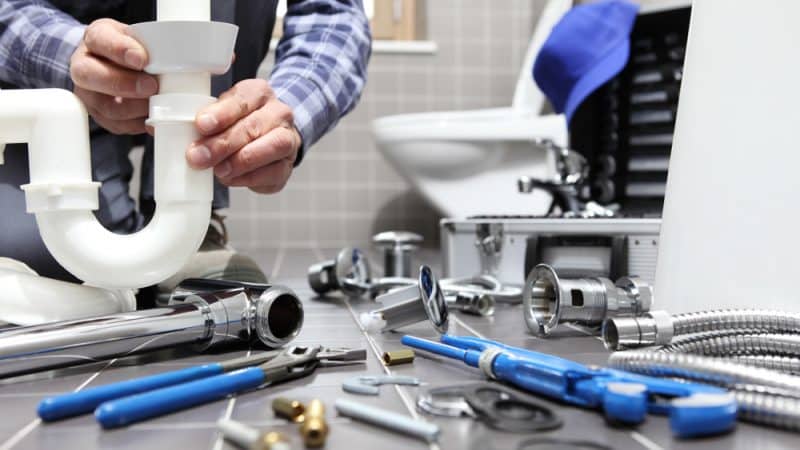When it comes to maintaining your residential or commercial plumbing system, prolonging its lifespan and ensuring its overall efficiency is of paramount importance. As an integral component of plumbing infrastructure, pipelines often require repairs or replacements due to corrosion, leaks, or other forms of deterioration. In such cases, traditional excavation methods can prove to be disruptive to your property, time-consuming, and costly. This is where pipe lining enters the picture as a trenchless pipeline rehabilitation solution that offers numerous benefits in terms of cost, time, and efficiency.
New Pro Plumbing, a family-owned and locally-operated provider of personalized and affordable plumbing services in Los Angeles and the surrounding areas, is proud to offer state-of-the-art pipe lining solutions tailored to meet your unique needs. In this comprehensive blog post, we will walk you through the fascinating world of pipe lining, shedding light on its process, benefits, and applications.
Armed with a deeper understanding of pipe lining and its potential for restoring the health of your plumbing system, you will be well-equipped to make informed decisions about your pipeline rehabilitation needs. Trust the dedicated team at New Pro Plumbing to provide expert advice, innovative technology, and unparalleled customer service, delivering efficient and cost-effective pipe lining solutions that restore and prolong the life of your plumbing infrastructure.
Understanding Pipe Lining: A Revolutionary Trenchless Rehabilitation Method
Pipe lining, also known as cured-in-place pipe (CIPP) lining, is a trenchless rehabilitation technique that involves relining or restoring the inner surface of damaged pipes. This innovative method eliminates the need for invasive excavation, reducing property damage and providing a more efficient solution for pipeline restoration. The result is a seamless, durable, and long-lasting new pipe within the existing pipe structure that prevents leaks, blockages, and other common plumbing issues.
The pipe lining process typically involves the following steps:
1. Initial Inspection: A professional technician conducts a thorough sewer camera inspection to assess the condition of the pipes and identify the underlying issues.
The Pipe Lining Process: Step-by-Step Procedure for Efficient Pipeline Restoration
2. Pipeline Preparation: The technician removes debris, blockages, and buildup from the pipes using hydro jetting or other appropriate cleaning methods.
3. Pipe Liner Insertion: A flexible, resin-coated liner is inserted into the damaged pipe and expanded using air or water pressure, fully covering the inside surface of the existing pipe.
4. Curing the Liner: The resin cures and hardens, forming a seamless, durable, and corrosion-resistant new pipe within the existing pipeline.
5. Final Inspection: After the curing process is complete, the technician conducts a final inspection to ensure proper installation and optimal pipe function.
Benefits of Pipe Lining: A Superior Alternative to Traditional Excavation Methods
Pipe lining offers several benefits compared to traditional excavation methods, including:
1. Reduced Disruptions: As a trenchless technique, pipe lining minimizes property disruption by eliminating the need for extensive digging and reducing potential landscape damage.
2. Faster Pipeline Restoration: The entire pipe lining process usually takes just one day to complete, significantly reducing downtime and quickly restoring your plumbing system.
3. Cost and Time Savings: Pipe lining is typically more cost-effective than traditional pipe replacement methods, eliminating excavation costs and requiring fewer labor hours.
4. Increased Durability and Lifespan: The seamless, corrosion-resistant new pipe installed during pipe lining extends the expected lifespan of your plumbing system by decades, providing long-lasting, leak-proof protection.
Applications for Residential and Commercial Properties: Versatile Pipe Lining Solutions
Pipe lining has versatile applications across various property types, solving numerous plumbing issues:
1. Residential Applications: Homeowners can benefit from pipe lining as an efficient solution to address common plumbing problems, such as corroded cast iron pipes, leaking joints, and root intrusion.
2. Commercial Applications: Pipe lining is an effective method for maintaining the plumbing infrastructure of businesses and large complexes, preserving the integrity of the property while minimizing downtime and inconvenience.
3. Historic and Sensitive Properties: For properties that require preservation of certain structures, such as historical buildings with fragile walls or foundations, pipe lining is an ideal solution for repairing and restoring plumbing systems without causing damage.
Choosing the Right Pipe Lining Solution: Expert Guidance and Tailored Recommendations
It is essential to select the appropriate pipe lining material and method to maximize its effectiveness and durability. Factors to consider include pipe diameter, pipe material, and the extent of damage. Consulting with a professional provider like New Pro Plumbing ensures a thorough assessment of your plumbing system, allowing for tailored recommendations and expert guidance to choose the best pipe lining solution for your property.
Conclusion:
Pipe lining is a modern, efficient, and cost-effective solution for pipeline rehabilitation, offering numerous benefits over traditional excavation techniques. By opting for pipe lining to restore your residential or commercial plumbing system, you can ensure a durable and long-lasting solution that minimizes disruptions and maximizes efficiency.
Trust the expert team at New Pro Plumbing to provide innovative pipe lining technology and unparalleled plumbing services in Los Angeles, CA, to address your pipeline restoration needs while maintaining the integrity and aesthetics of your property.
















